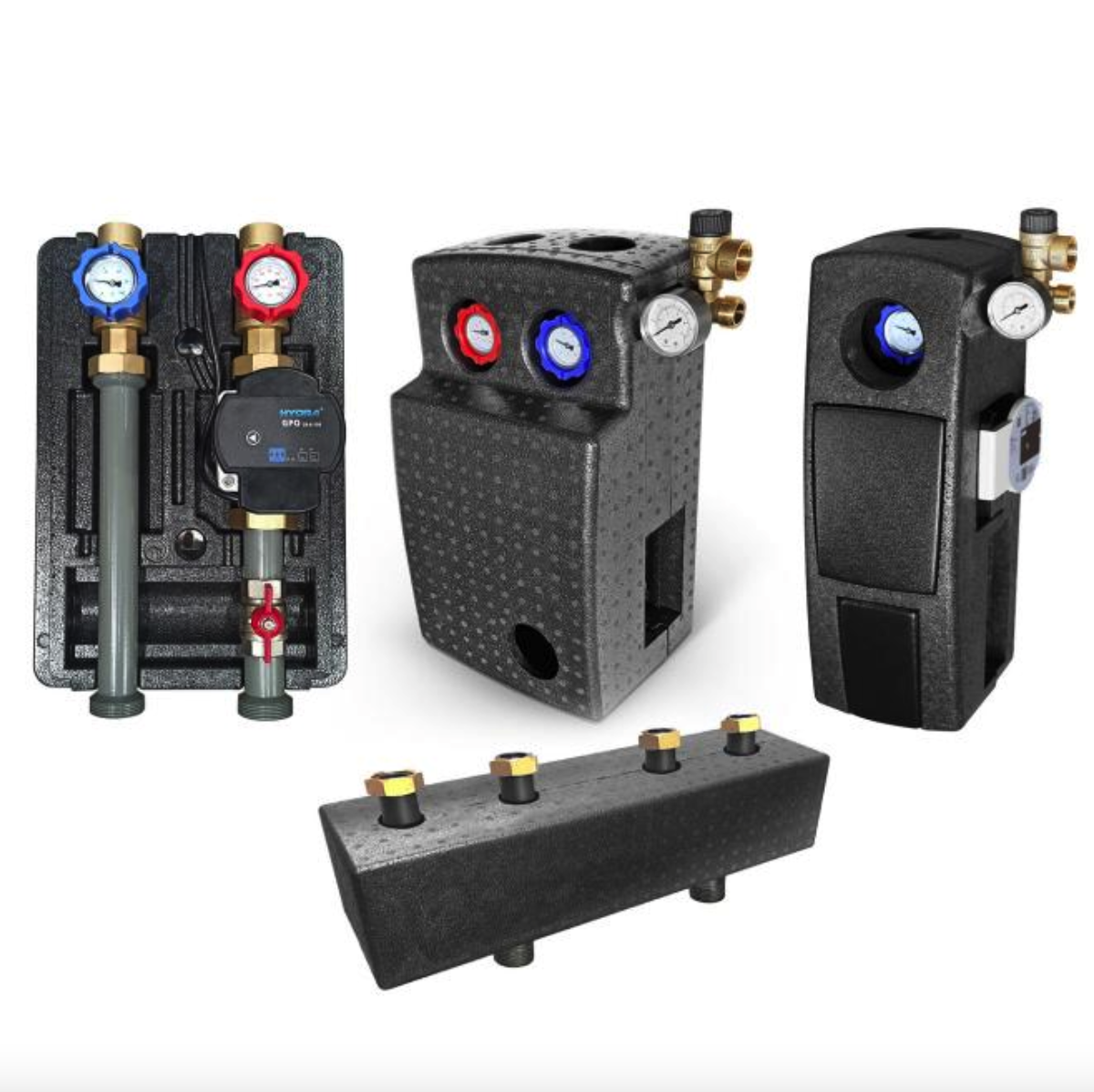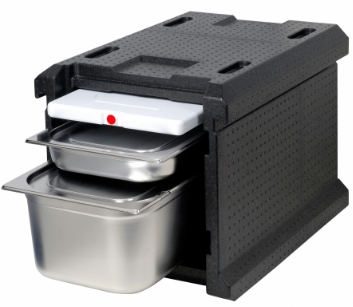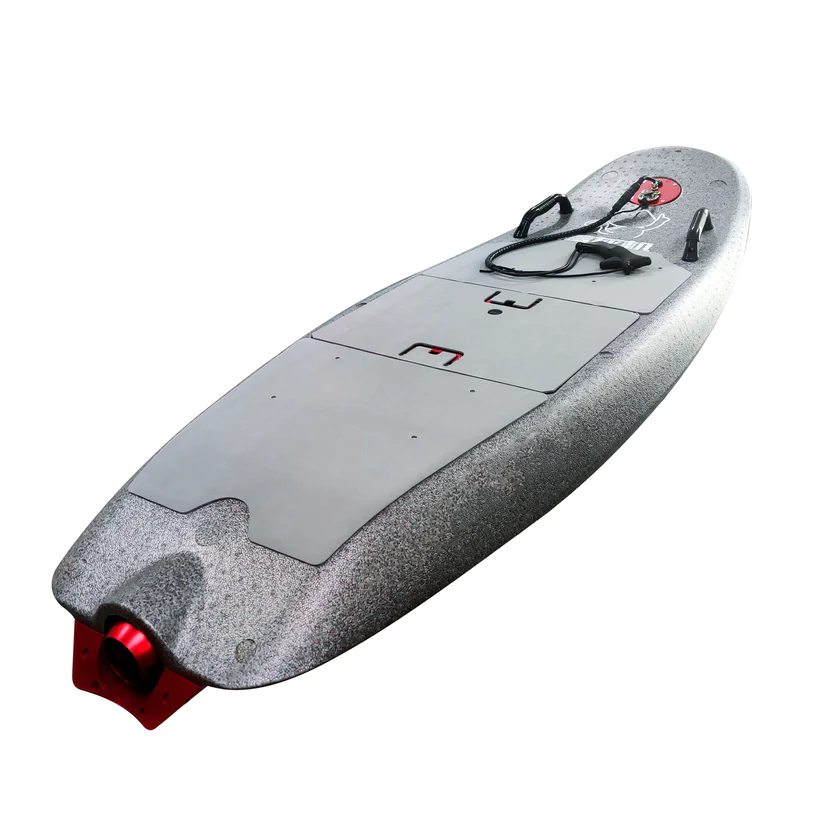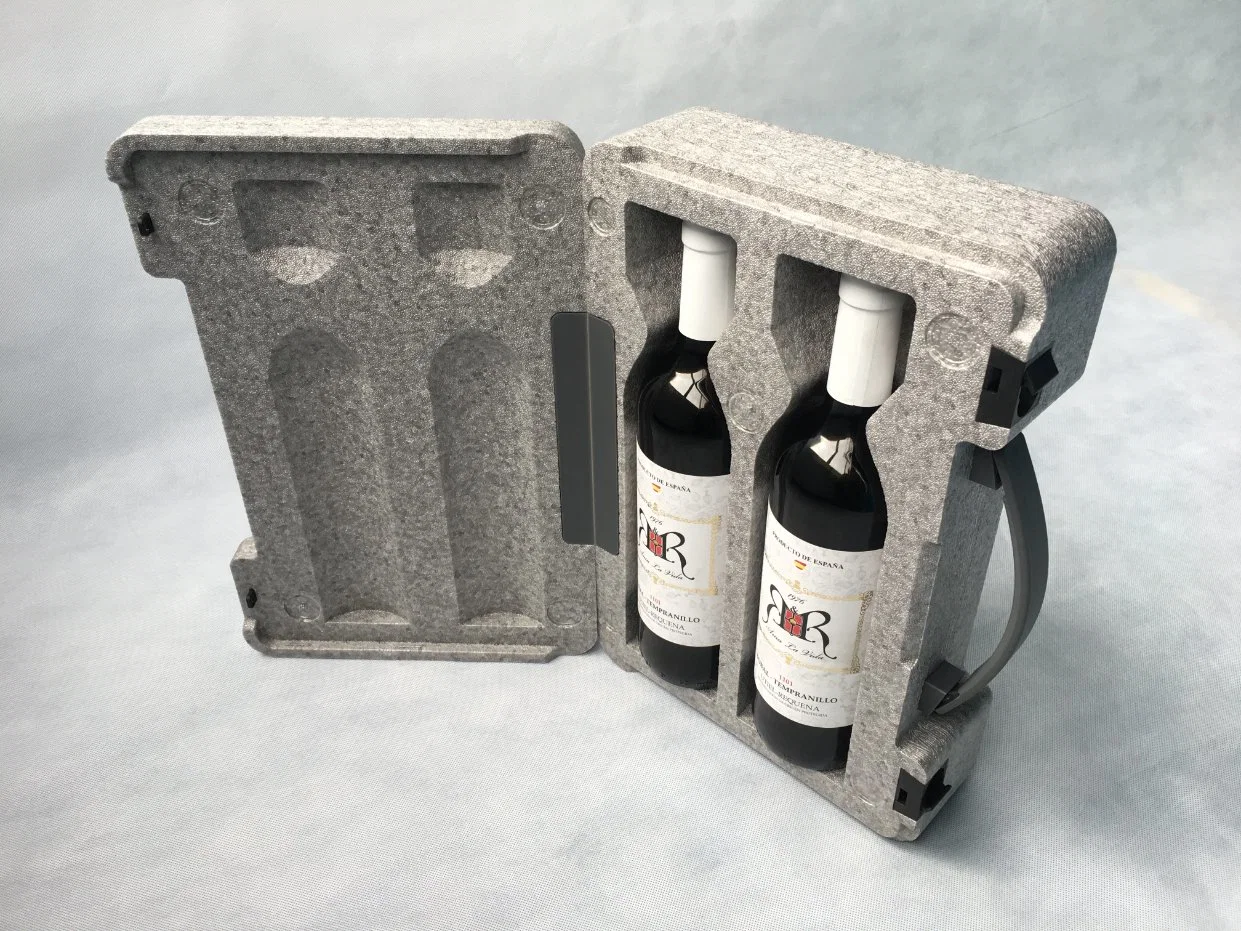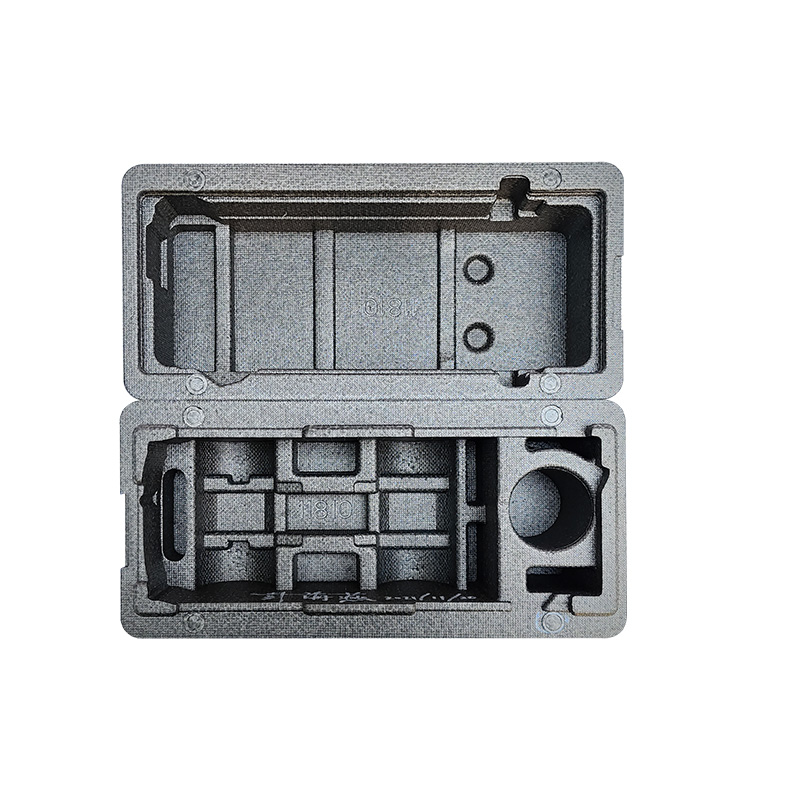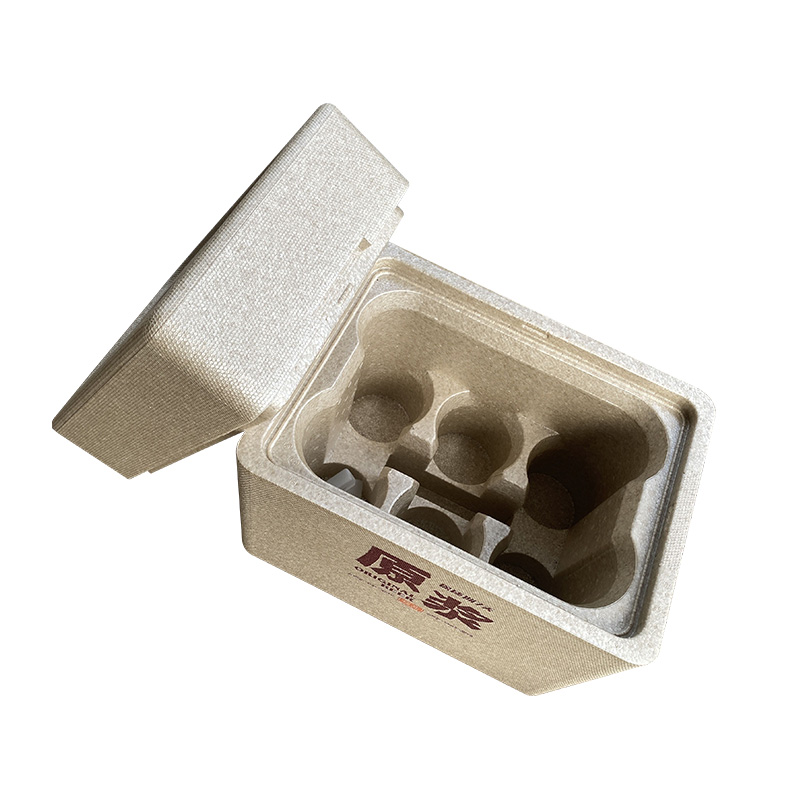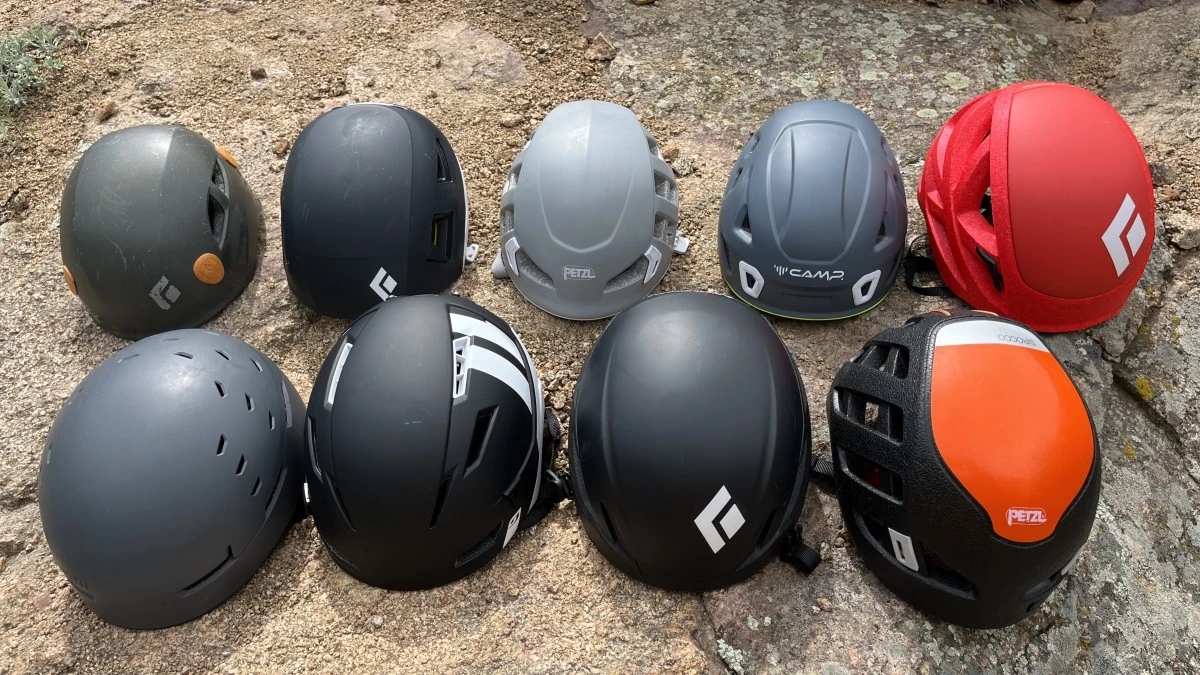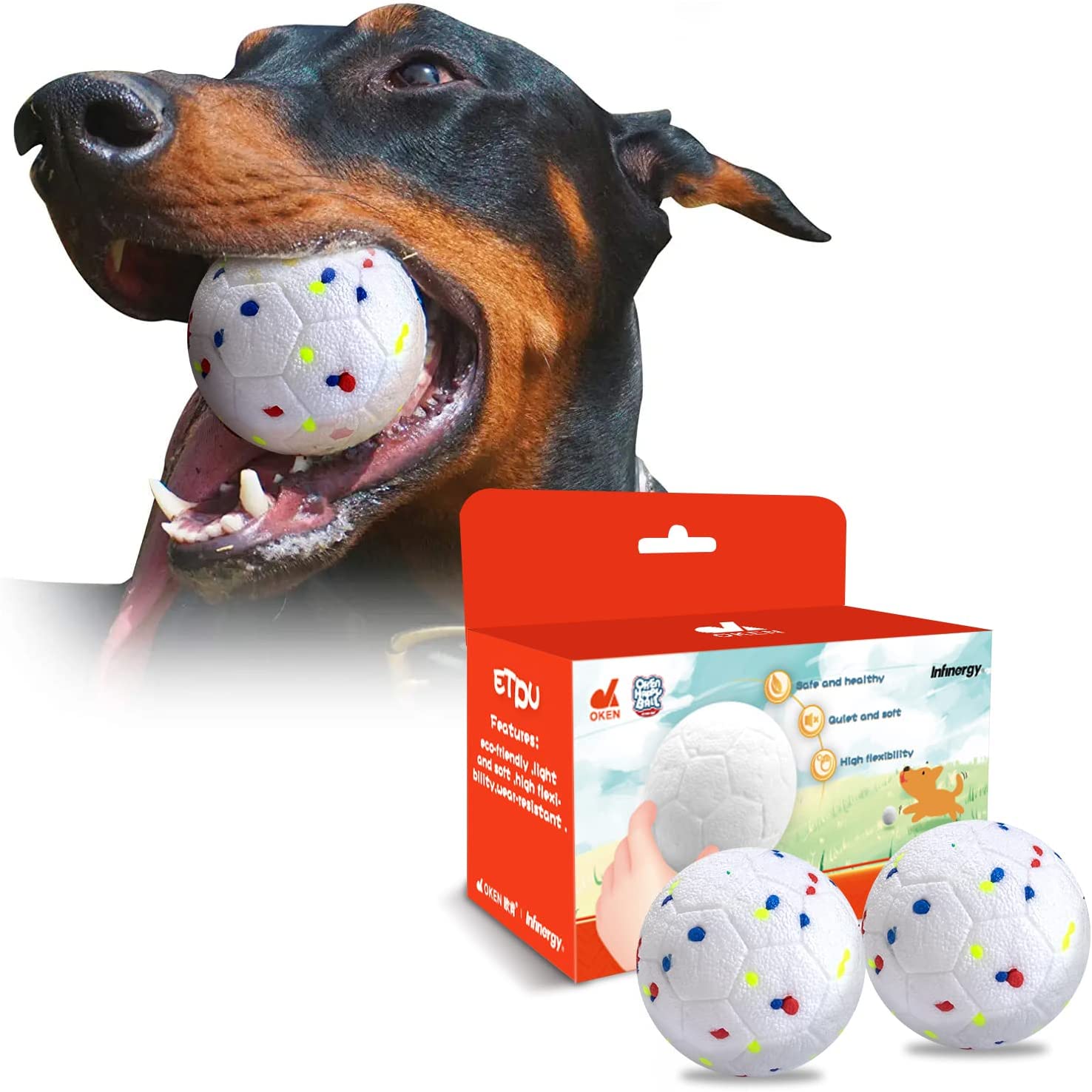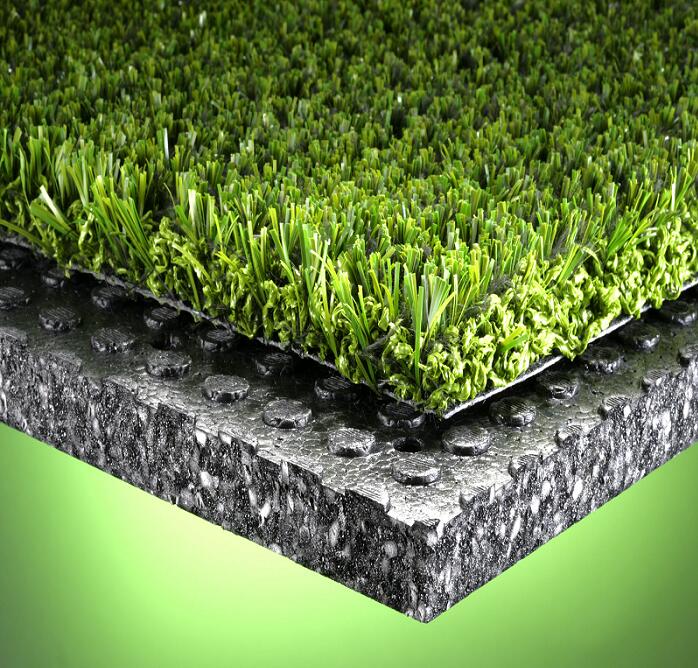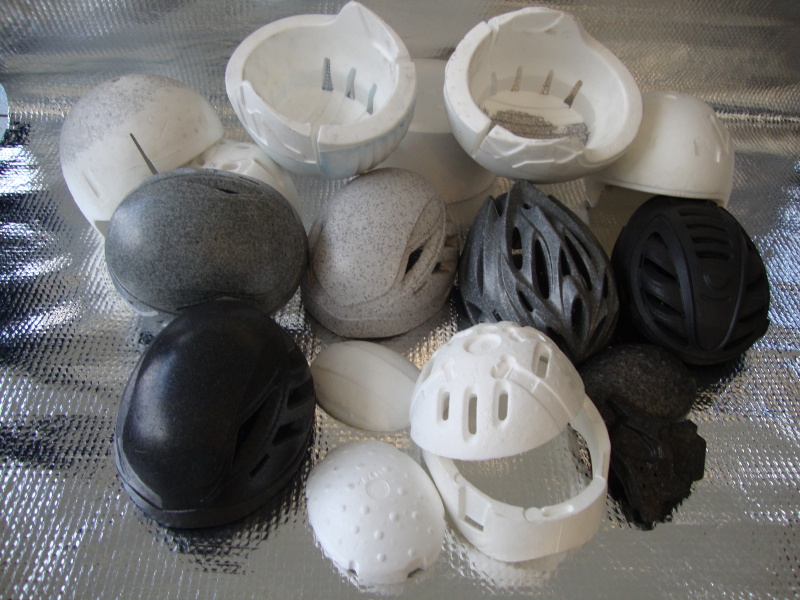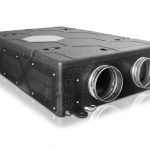-
How EPP foam can be beneficial for HVAC structure casing
EPP is an excellent material choice for HVAC structural parts because it can be molded into complex shapes without losing its resiliency.The design flexibility of EPP enables key system components such as pumps, boilers, valves, heat-exchangers and control mechanisms to be universally housed in EPP to improve their insulation.
넶0 2024-04-01 -
Transport and insulation made easy with EPP foam boxes
EPP foam cooler and heat insulation boxes are increasingly popular for various cooling and storage needs due to their excellent insulation properties, durability, and lightweight construction.
넶1 2024-04-01 -
EPP foam insulation boxes
EPP insulation boxes have become indispensable companions for many families during outdoor activities such as picnics, camping, and travel. Whether it's cold drinks, fruits, or cooked food, as long as they are placed in EPP insulation boxes, they can be kept fresh and at the desired temperature, allowing you to enjoy delicious food even outdoors.
넶5 2024-03-22 -
EPP foam, Expanded Polypropylene, is a popular material for various applications due to its lightweight, durable, and buoyant properties.
For surfboards and efoils, EPP foam can be an excellent choice due to its buoyancy and impact resistance.
넶10 2024-03-21 -
Here's how EPP foam is utilized in wine packaging:
Expanded Polypropylene (EPP) foam is commonly used in wine packaging applications due to its excellent cushioning and protective properties.
넶10 2024-02-27 -
Reasons for choosing EPP foam material for packaging
EPP foam material, as a new environmentally friendly packaging material, has excellent buffering performance, soft touch, environmental protection and recyclable, wide range of applications, good heat insulation performance, strong durability and other characteristics, so it is widely used in the field of packaging.
넶30 2023-11-27 -
EPP insulation cooler box is your ideal choice!
This is our EPP insulation box, a thermal insulation equipment made of advanced EPP materials. Whether it is in catering, medical, industrial and other occasions that need insulation, or in picnics, outdoor activities and other mobile occasions, EPP insulation cooler box is your ideal choice!
넶16 2023-11-27 -
What are Helmets Made of?
Learn about the differences in materials used to construct a helmet.
Expanded Polypropylene (EPP) foam is often chosen for helmet liners due to its unique set of characteristics that make it well-suited for impact protection and comfort. Here are some reasons why EPP foam is commonly used in helmet liners:넶32 2023-11-27 -
Why choose ETPU foam material for pet chew toys
ETPU materials provide a unique combination of durability, safety, and comfort that make them the best choice for pet toys. Whether you’re looking for a chew toy, a ball, or a flying disc, consider investing in an ETPU pet toy for hours of fun-filled playtime with your furry friend.
넶33 2023-08-31 -
EPP foam shockpad underlayment for Artificial Grass football playground
Using EPP foam drainage shock pad in sports artificial grass football pitch as underlay not only benefits the environment but also the sports industry as a whole. Its shock-absorbing properties can help reduce the risk of injury to athletes, while its lightweight and durable nature makes it an ideal material for sports that needs to withstand intense use.
넶39 2023-08-28 -
EPP foam helmet liner or EPS foam helmet liner for Helmet?
Foam is used for energy management in most helmets. There are many types, but EPS is still the choice for most bike helmets. The ideal foam would be stiffer in hard impacts, softer in lesser impacts, light, cheap, reliable to manufacture and easy to ventilate.
넶52 2023-08-27 -
Benefits of using expanded foams for packaging (including cost and weight reduction)
EPS, and especially EPP, are excellent protective packaging materials due to their mechanical strength and shock and vibration damping capacity. This protects the goods from careless handling, bumps in the road or an unfortunate fall.
넶60 2023-08-21 -
What are Helmets Made of?
Expanded Polypropylene (EPP) foam is often chosen for helmet liners due to its unique set of characteristics that make it well-suited for impact protection and comfort. Here are some reasons why EPP foam is commonly used in helmet liners:
Choosing the right helmet is more than just a matter of style or price point; the materials used in helmet construction play a
critical role in both safety and comfort.
The helmet shell, liner, padding, and retention system contribute to the helmet’s overall performance, with different materials offering unique advantages and considerations.
Expanded Polypropylene (EPP) foam is often chosen for helmet liners due to its unique set of characteristics that make it well-suited for impact protection and comfort. Here are some reasons why EPP foam is commonly used in helmet liners:
High Impact Absorption: EPP foam has excellent energy absorption properties, making it effective in dissipating and spreading the impact energy in the event of a collision or impact. This property is crucial for protecting the head from injury.
Memory and Resilience: EPP foam is known for its ability to deform upon impact and then return to its original shape. This memory and resilience mean that the foam can absorb multiple impacts without compromising its protective qualities, making it suitable for applications where repeated impacts may occur.
Lightweight: EPP foam is relatively lightweight compared to some other materials, providing comfort for the helmet wearer. Helmets made with EPP foam are not overly heavy, which is important for user comfort, especially during extended periods of wear.
Durability: EPP foam is durable and has a long lifespan, making it well-suited for helmets that need to withstand regular use and potential impacts. It can resist wear and tear, maintaining its protective qualities over time.
Customization and Molding: EPP foam can be molded into various shapes and sizes, allowing for customization to fit different head sizes and helmet designs. This molding capability ensures a snug and secure fit, enhancing both comfort and safety.
Temperature Resistance: EPP foam has good temperature resistance, and it can maintain its properties across a range of temperatures. This is important for helmets that may be used in various weather conditions.
Recyclability: EPP foam is recyclable, adding an environmental advantage to its use in helmet liners. As sustainability becomes increasingly important, materials that can be recycled or reused are favored.
Applications in Various Sports: EPP foam is used in helmets across various sports, including cycling, skiing, snowboarding, and others. Its versatility and effectiveness make it a popular choice in the design of protective headgear.
When choosing a helmet, it's important to consider safety standards, proper fit, and the specific requirements of the intended activity. EPP foam, with its combination of impact absorption, comfort, and durability, has proven to be a reliable material for helmet liners in many applications.
In this article, let's compare the most commonly used materials in each of these four key helmet parts; exploring Polycarbonate and ABS for shells, various liner materials, padding options, and the materials employed in retention systems.
By understanding these, you’ll be better equipped to decide which helmet is right for you, balancing your specific needs and preferences for safety, comfort, and durability.
Polycarbonate vs ABS shell
The helmet shell is critical, protecting the head from impact and abrasions. Helmet manufacturers choose specific materials for the shell based on factors such as strength, weight, durability, and cost.
| Characteristic | Polycarbonate (PC) | Acrylonitrile Butadiene Styrene (ABS) |
|---|---|---|
| Type of helmets | Road, time-trial | Mountain bike, downhill, commuter, kids |
| Helmet price | $$$ – $$$$$ | $ – $$$ |
| Raw material cost | Affordable, roughly $1.50/lb | Affordable, roughly $1.50/lb |
| Recyclability | Can be easily recycled at specific facilities | Can be easily recycled at specific facilities |
| Impact Resistance | High, making it ideal for protecting against head injuries | Extremely high, offering excellent protection |
| Heat Resistance | Up to 176ºF/80ºC | Up to 266ºF/130ºC |
| Cold Resistance | Down to -4ºF/-20ºC | Down to -40ºF/-40ºC |
| Chemical Resistance | Good, helps in maintaining the helmet’s integrity | Good, ensuring the helmet’s durability |
| UV Resistance | Fair, but may degrade with prolonged sun exposure | Better, though still may weaken over time |
| Weight | Lightweight, contributing to comfort during long rides | Heavier, which could reduce comfort on long rides |
| Ventilation | Can be molded to include vents, improving airflow | Generally fewer vents, leading to less comfort during warm rides |
| Aesthetic Appeal | Shiny and resistant to scratches, maintains a good appearance | Can get scratched, affecting the overall look |
Here is a more detailed explanation of the common shell materials.
Polycarbonate (PC) shell
Polycarbonate, a thermoplastic polymer known for its high impact resistance, is a popular choice for helmet shells.
Its lightweight nature, excellent optical clarity, and ease of molding into various shapes make it ideal for helmet construction. Often used in in-mold construction, polycarbonate bonds well with EPS liners during manufacturing. Its affordability and versatility make it suitable for a range of helmet designs, from entry-level to high-end models.
Pros of PC shell
- High impact resistance. Polycarbonate provides a strong and protective outer shell, effectively absorbing and dispersing the force of impacts.
- Lightweight. The material’s lightweight properties contribute to a comfortable, easy-to-wear helmet.
- Cost-effective. Polycarbonate is an affordable option for helmet manufacturing, making it accessible to a wide range of cyclists.
- Compatibility with in-mold construction. The ability to bond well with EPS liners during the in-mold process results in a seamless, integrated helmet design.
Cons of PC shell
- Susceptibility to scratches. Polycarbonate can be prone to scratches, affecting its appearance and potentially compromising its optical clarity.
- UV degradation. Prolonged exposure to sunlight may cause the material to weaken or discolor, impacting the helmet’s durability and appearance.
Examples : Lazer G1 MIPS, Kask Protone, POC Ventral Air SPIN
Acrylonitrile Butadiene Styrene (ABS) shell
Acrylonitrile Butadiene Styrene (ABS) is a thermoplastic known for its toughness and rigidity.
Boasting a higher tensile strength than polycarbonate, ABS contributes to the durability of helmets. Often used in skate-style helmets and budget-friendly options, ABS provides a hard, protective outer shell at a lower cost. However, ABS plastic is generally heavier than polycarbonate, making helmets less comfortable for long rides.
Acrylonitrile Butadiene Styrene (ABS) is a versatile and robust thermoplastic developed in the 1940s and 1950s by various scientists from different companies.
It is created by polymerizing acrylonitrile, butadiene, and styrene monomers, resulting in a material that combines the strength of acrylonitrile and styrene polymers with the flexibility of butadiene rubber. ABS is known for its excellent impact resistance, durability, and high tensile strength.
This cost-effective material is widely used in numerous applications, including automotive parts, consumer goods, and the construction industry. In the context of bicycle helmets, ABS provides a hard, protective outer shell at a lower cost than other materials.
However, it is generally heavier than alternative materials like polycarbonate, which can affect the comfort of a helmet during extended use. Despite its weight, ABS remains a popular choice for skate-style helmets and budget-friendly options due to its strength and affordability.
Pros of ABS plastic shells
- High tensile strength. ABS offers a strong, rigid outer shell, enhancing the helmet’s overall durability.
- Durable. The material’s toughness makes it resistant to cracks and other damage, contributing to a longer-lasting helmet.
- Cost-effective. ABS plastic provides a protective shell at a lower cost, making it an attractive option for budget-conscious consumers.
Cons of ABS plastic shells
- Heavier than polycarbonate. The increased weight of ABS plastic can make helmets less comfortable for long rides, especially when compared to lighter alternatives like polycarbonate.
- Less ventilation. ABS helmets often have fewer vents, decreasing airflow and reducing comfort during warmer rides.
Examples : Bell Sanction, Abus Hyban 2.0
EPS vs EPP vs Koroyd liners
The helmet liner is crucial in providing impact protection during a crash. It is designed to absorb and distribute impact forces, reducing the risk of head injuries.
Various materials are used for helmet liners, each with advantages and disadvantages.
| Characteristic | Expanded Polystyrene (EPS) | Expanded Polypropylene (EPP) | Koroyd |
|---|---|---|---|
| Impact Resistance | High, crushes to absorb impact but doesn’t recover its shape | High, crushes to absorb impact but recovers shape, offering multiple-impact protection | High, with a unique structure designed to absorb and convert more energy from an impact |
| Weight | Lightweight | Lightweight | Lightweight |
| Ventilation | Good, can be molded to include vents | Good, can be molded to include vents | Superior, the open-cell structure allows for excellent airflow |
| Durability | Good, but deteriorates after an impact and needs to be replaced | Excellent, retains shape and effectiveness after impacts | Good, but should be replaced after a significant impact |
| Environmental Impact | Not easily recyclable, can take a long time to decompose | Recyclable and reusable | Koroyd materials are recyclable and claim to be carbon neutral |
| Price | Affordable, widely used in helmet construction | More expensive due to its reusable nature | Premium, due to its unique structure and performance characteristics |
Here is a more detailed explanation of the common liner materials.
Expanded Polystyrene (EPS)
Expanded Polystyrene (EPS) is the most widely used liner material for bike helmets. It is a rigid foam made from small polystyrene beads that are expanded and molded together. Lightweight and effective at absorbing impact energy, EPS foam is suitable for a wide range of helmet designs.
During an impact, the foam compresses, dissipating the energy and reducing the force transmitted to the rider’s head. However, EPS foam is generally designed for one-time use, as it does not fully recover after compression. This means helmets with EPS liners should be replaced after a significant impact.
Pros of EPS liners
- Lightweight. EPS foam is lightweight, contributing to helmet comfort and reducing strain on the rider’s neck and shoulders.
- Effective at absorbing impact energy. The foam’s ability to compress and dissipate energy reduces the force transmitted to the rider’s head during an impact.
- Cost-effective. EPS liners are affordable, making them popular for a wide range of helmet designs.
Cons of EPS liners
- Designed for one-time use. Since EPS foam does not fully recover after compression, helmets with EPS liners must be replaced after a significant impact to ensure continued safety and protection.
- Limited impact protection for multiple smaller impacts. While highly effective for single impacts, the one-time use nature of EPS foam may provide less protection in situations involving multiple smaller impacts over time.
Examples : Lazer Z1 MIPS, Giro Aries Spherical, POC Ventral Air SPIN
Expanded Polypropylene (EPP)
Expanded Polypropylene (EPP) is a closed-cell foam with greater resilience than EPS foam.
EPP can withstand multiple impacts without significant degradation in performance by having similar energy-absorbing properties to EPS liners. This makes it an attractive choice for helmets designed for activities with a higher risk of repeated impacts, such as BMX or aggressive mountain biking.
EPP foam is more expensive than EPS foam and may not be as widely available in helmet designs. However, its multi-impact performance can make it a more suitable choice for certain riders and disciplines.
Pros of EPP liners
- Multi-impact performance. EPP foam can handle multiple impacts without significant degradation in performance, providing ongoing protection during activities with a higher risk of repeated impacts.
- Resilient and durable. EPP foam is more durable than EPS foam, potentially extending the life of a helmet.
Cons of EPP liners
- More expensive than EPS foam due to its reusable nature.
- Less common in helmet designs. EPP foam is not as widely used, which may limit the options for riders seeking this type of liner.
Examples : POC Otocon
Koroyd
Koroyd is a relatively new material used in some helmet liners, consisting of small, welded tubes that create a honeycomb-like structure. This unique design allows for impressive energy absorption and increased airflow compared to traditional foam liners.
When an impact occurs, the Koroyd tubes crumple, absorbing the energy and reducing the force transmitted to the head. Additionally, the open structure of Koroyd promotes ventilation, making it an attractive choice for riders seeking protection and comfort.
Some helmets use Koroyd in combination with EPS or EPP foam, providing a hybrid liner that benefits from the properties of both materials.
Pros of Koroyd liners
- Effective at absorbing impact energy. The unique honeycomb-like structure of Koroyd effectively absorbs impact energy, providing increased protection during a crash.
- Improved ventilation and airflow. The open structure of Koroyd allows for better ventilation and airflow, keeping riders cool and comfortable during their rides.
Cons of Koroyd liners
- Limited availability in helmet designs. Koroyd is still relatively new and not as widely used in helmet designs, which may limit the options for riders seeking this type of liner.
- More expensive than traditional foam liners.
Examples : Smith Network MIPS, Endura MT500 MIPS
Foam vs gel padding
Helmet padding serves multiple purposes, including enhancing comfort, providing a secure fit, and wicking away sweat. Various materials are used for padding in bike helmets, each with advantages and disadvantages.
Here’s a comparison table focusing on foam, gel, and moisture-wicking fabrics used in bike helmets.
| Characteristic | Foam padding | Gel padding |
|---|---|---|
| Comfort | Good, offers cushioning but can absorb sweat and become uncomfortable | Excellent, molds to the head for a customized fit, doesn’t absorb sweat |
| Durability | Good, but can degrade over time, especially with sweat absorption | Excellent, resistant to sweat and maintains shape over time |
| Maintenance | Needs regular cleaning due to sweat absorption | Easy to clean, doesn’t absorb sweat |
| Weight | Lightweight, doesn’t add much to helmet weight | Heavier than foam, can add weight to the helmet |
| Heat Management | Poor, can retain heat | Good, doesn’t absorb heat |
| Price | Affordable, commonly used in helmets | More expensive due to its superior comfort and durability |
Here is a more detailed explanation of common padding materials.
Foam padding
Foam padding is commonly used in bike helmets because it is lightweight and cost-effective. It cushions the rider’s head and the helmet’s liner, improving comfort and ensuring a snug fit. Foam padding can be made from various materials, such as polyurethane or EVA (ethylene-vinyl acetate) foam.
Pros of foam padding
- Lightweight. Foam padding is light, which helps maintain the overall comfort and wearability of the helmet.
- Affordable. Using foam padding in helmet designs is cost-effective, making it accessible for a wide range of budgets.
- Provides cushioning for added comfort. Foam padding enhances comfort by cushioning between the rider’s head and the helmet’s liner.
Cons of foam padding
- Absorbs sweat, leading to reduced comfort and hygiene over time.
- Average durability. May compress and lose its cushioning properties with extended use.
Examples : Giro Synthe MIPS, POC Ventral Air SPIN, Specialized S-Works Prevail II
Gel padding
Gel padding is a more advanced option, offering improved comfort and cushioning than traditional foam padding.
It conforms to the shape of the rider’s head, distributing pressure evenly and reducing the risk of pressure points or hot spots. Some gel padding materials also have temperature-regulating properties, helping to keep the rider’s head cool during hot rides.
Pros of gel padding
- Conforms to the rider’s head for a custom fit. Gel padding adjusts to the shape of the rider’s head, providing a personalized fit and increased comfort.
- Offers superior cushioning and comfort. Gel padding delivers improved cushioning compared to foam padding, enhancing the overall comfort of the helmet.
- Good heat management. Some gel padding materials have temperature-regulating properties, which can help maintain a comfortable head temperature during hot rides.
Cons of gel padding
- Heavier than foam padding. Can be less comfortable during longer rides.
- More expensive than foam padding due to its superior comfort and durability
Examples : Lazer G1 MIPS, MET Trenta 3K, Scott Cadence Plus
Retention system materials
Retention systems play a critical role in ensuring that a bike helmet stays securely in place during a ride and in the event of a crash. These adjustable systems provide a snug, comfortable fit while allowing riders to customize the helmet’s tightness to suit their head shape and size.
Here’s a detailed explanation of common retention system types and their features.
Dial Adjust System
Dial adjust systems, also known as micro-adjust systems, are among modern bike helmets’ most popular retention systems. They feature a dial at the back of the helmet, which can be turned to tighten or loosen the fit.
These systems provide a high level of adjustability and precision, allowing you to fine-tune your helmet fit easily.
Pros of dial adjust systems
- Precise and easy-to-use adjustments. Dial adjust systems allow for accurate and user-friendly adjustments, ensuring a secure and comfortable fit.
- Evenly distributes pressure for a comfortable fit. By tightening or loosening the helmet evenly, these systems help to prevent pressure points and ensure a snug, comfortable fit.
- Often compatible with one-handed adjustments while riding. Many dial adjust systems can be operated with one hand, allowing riders to adjust without stopping.
Cons of dial adjust systems
- May add weight and complexity to the helmet. Can increase a helmet’s overall weight and complexity compared to simpler retention systems.
- Can be more expensive than other retention systems due to their enhanced adjustability and convenience.
Send us Your Enquiry now:


